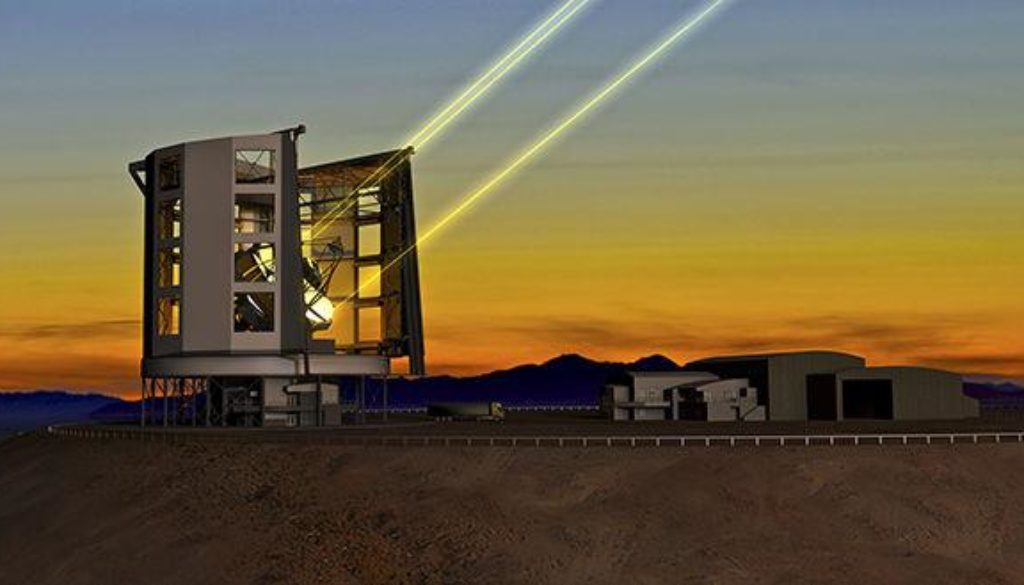World’s largest telescope rolls on
The stars have never been closer to Texas, as 2014’s final months brought the world’s largest telescope to the threshold of construction.
The Giant Magellan Telescope will be 10 times stronger than the Hubble Space Telescope when it sees first light in 2021, surpassing any previous observatory. Texas A&M and the University of Texas are two of 11 international partners who hope to start construction in the Chilean desert before summer — a goal nearly realized over the past six months with millions in donations, a hiring spree and infrastructure development.
The GMT’s latest contribution came from the University of Arizona, which received a $20 million gift from entrepreneur Richard Caris on Dec. 15 toward the project. Caris is founder and chairman of Interface Inc., a tech company that designs load cells commonly used in the oil industry.
Buell Jannuzi, director of the University of Arizona’s Steward Observatory, said Caris’ gift brought Arizona’s total contribution close to $35 million. He said Arizona is committed to raise $60 million toward the GMT, but hopes to eventually double that figure.
Texas A&M and UT Austin have raised $28.1 and $50 million, respectively, as of September. A GMT partner’s financial contribution ensures viewing rights on the telescope when it comes online in 2021 — a distinction both Texas universities said will ensure their astronomy departments remain competitive on the global stage.
Darren DePoy, physics professor and member of GMT’s board of directors, said Texas A&M is closing in on the second half of its planned $50 million contribution. An A&M Board of Regents meeting scheduled for Feb. 12 will hear a breakdown of how A&M plans to finance the telescope commitment.
“I approve of the commitment funding schedule, Dean Newton does, our understanding is both the provost and the president — Provost Watson and President Hussey — approve of the documents and would like to sign them,” DePoy said.
Caris’ winter donation capped a six-month funding windfall that has pushed the GMT close to a formal construction announcement, said Patrick McCarthy, GMT director. Several of the GMT’s other partners were also able to raise their contributions, bringing the telescope’s total commitment to approximately $500 million.
“Our first [funding] target, the one that’s critical towards building the telescope and building the whole facility, the partners and the board are essentially on the threshold of that target,” McCarthy said.
While a formal construction announcement is not expected for a few months, preparation has already begun to transform part of the Chilean mountainside into an observatory. The site’s remote location requires the GMT organization to build everything necessary to sustain a billion-dollar construction site. Housing and support structures for the 200 to 250 workers expected to build the telescope are under construction, as well as power lines and roads.
“We’re establishing our beachhead on the mountain to begin the construction process sometime in this calendar year,” McCarthy said.
The GMT organization itself is expanding. McCarthy said the staff will grow from about 50 people to around 150 engineers, scientists and administrators who will take the telescope through construction and beyond.
And the GMT’s fourth monolithic mirror will begin its “glass melt” phase in late March. The GMT’s optical surface will eventually consist of seven 8-meter diameter mirrors, but its design can work with just four, a trait that might hasten its title as “world’s largest.”
“The fourth mirror is important because that really gets us to a place where we will have undisputedly the largest telescope on the planet,” McCarthy said. “We can make the telescope work with only four mirrors if we needed to while we continue to make the rest of the mirrors, so we see it as an important milestone.
